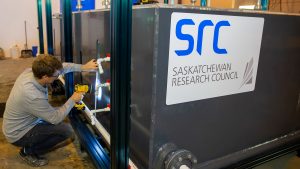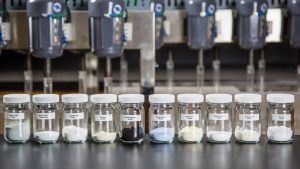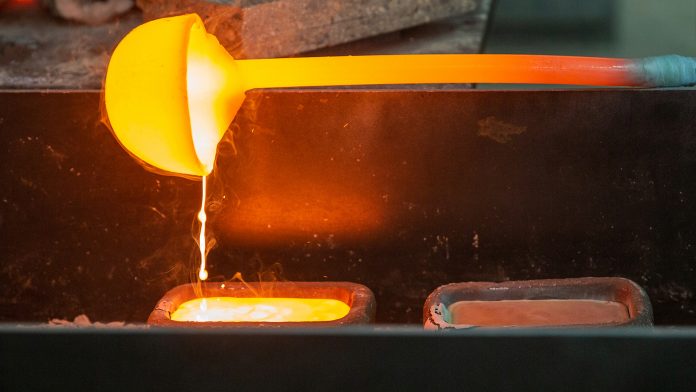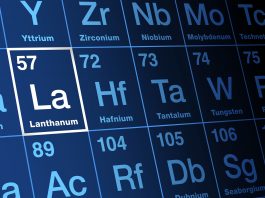The Saskatchewan Research Council is currently building Canada’s first-ever Rare Earth Processing Facility. We spoke to the organisation’s President and CEO, Mike Crabtree, to find out what this could mean for North America’s rare earth supply chain.
Rare earth elements (REEs) are a set of 17 metallic elements and are crucial components in many high-tech devices used today. Despite their name, these elements are not actually ‘rare’ and are found across the world. However, global production of rare earth elements is still dominated by China.
With demand for rare earth elements reaching an all-time high, many nations are recognising the pressing need to utilise their own reserves and establish strong and reliable domestic rare earth supply chains.
Canada, for example, has immense reserves and resources of REEs, with an estimated 15.1 million tonnes of rare earth oxide. Whilst the country is host to several exploration projects, it is not yet a mass commercial producer of REEs.
On a mission to place Canada on the map when it comes to rare earths, the Saskatchewan Research Council (SRC), Canada’s second-largest research and technology organisation, is working with the Government of Saskatchewan to develop and build Canada’s first-ever Rare Earth Processing Facility. It is hoped that the facility will lay the foundations for a REE supply chain in Saskatchewan and help to form an industry model for future commercial REE resource expansion in the province.
To date, the facility has received C$71m funding from the Government of Saskatchewan as part of its 2030 Growth Plan, as well as additional funding from Prairies Economic Development Canada. The facility will be owned and operated by the SRC and will produce high-value REEs and magnet metals using REE minerals. Construction of the facility is in progress and on track to be fully operational by the end of 2024. The facility consists of three fully integrated units that include hydrometallurgy, separation and metal smelting stages.

The Innovation Platform spoke to Mike Crabtree, President and CEO of the Saskatchewan Research Council, to find out the potential of the new Rare Earth Processing Facility to accelerate Canada and North America’s role in the global rare earth supply chain.
What potential does North America have for rare earth elements?
The potential for rare earth development in North America is very significant, both for North America and globally. North America’s resources of rare earth elements are abundant, with the US and Canada ranking in the top six for the largest volume of rare earth reserves globally.
In terms of utilisation, the North American economy is a significant consumer of rare earths. This means that the North American continent contains both the source and the future means to be able to convert rare earths to all the original equipment manufacturer (OEM) products that will be required as part of the energy transition and the 21st century economy.
How would you describe North America’s current rare earth supply chain?
The current rare earth supply chain in North America is still very much nascent and remains under development. When compared to China, which has been the dominant global player in REE for many decades, North America is in an early stage catch-up phase. Currently, there is just one active mine in Canada and one in the US.
Looking further down the supply chain into the midstream processing, there is very little midstream processing at scale at present. However, there are a few midstream processing facilities currently under development. SRC’s Rare Earth Processing Facility is one of those.
In summary, the entire supply chain for rare earths today, despite having huge potential, is still in its infancy.
What are the challenges preventing North America from accelerating its rare earth supply chain? How can these be overcome?
There are a number of technical, commercial and political challenges impacting the scale of development of North America’s rare earths sector.
In terms of political obstacles, China dominates 90% of the entire supply chain – from the extraction of rare earths right through to the production of, for example, neodymium and praseodymium metals and magnets. As other parts of the world, specifically North America, look to develop their own supply chain, the Chinese take the opportunity to manipulate the market, particularly in terms of the quantity and price of rare earth ore and rare earths, causing a significant political impact on market development.
This has had a variety of collateral impacts, including that it is difficult for private investment to generate mature and effective forward financials for their investments in the rare earth sector. This is how the market can be suppressed in terms of investment.
Traditionally, rare earths have typically been developed and refined in China. Therefore, jurisdictions outside of China are now playing catch up in terms of understanding how to mine rare earths effectively and, moreover, process them both effectively and efficiently.
That is one of the reasons why governments around the world have taken a lead in stimulating and catalysing the rare earth sector, from mining incentives right through to the funding of midstream processing facilities, such as SRC’s Rare Earth Processing Facility, which is mainly funded by government. There are several reasons why government has taken that position. It is to demonstrate that the technology can be developed and operated efficiently; to prove the commercial viability of the sector; and to develop those supply chains that are going to be necessary outside of China in order to deliver to the industry effectively.
How is SRC helping to support the growth of North America’s supply chain?
SRC’s role in this is to develop and catalyse the rare earth extraction and processing capability, specifically in Canada but also with a view to North America and globally.
SRC has been working on rare earth processing technology for nearly 15 years. Three years ago, we made a proposition to the Government of Saskatchewan that we could build a commercial demonstration facility. This facility would not only inherently be profitable in itself, but it would act as a demonstration facility to showcase the technology, commercial viability, and the market accessibility of large-scale processing of rare earths from, in our case, the mineral monazite right through to production of neodymium and praseodymium metals.

We decided to design, develop, and build a fully-integrated minerals-to-metals Rare Earth Processing Facility. Here, the three main processes involved in that facility are integrated together, which has a number of benefits. Integrating the processes adds a huge amount of efficiency, but it also mitigates strongly against the volatility of pricing within the market. For example, if one part of the market or process is impacted by price volatility, it is compensated by the other parts of the facility. You can take the oil and gas sector as an example here. In this sector, vertically integrated oil and gas companies often own the oil fields, refineries and gas stations. Therefore, when the price of oil is high, they make their money in the oil wells. When the price of oil is low, they make their money during the refinery process and in the gas stations. This provides a ‘buffer’ against price volatility. That’s exactly what a vertically integrated rare earth processing plant is.
Is sustainability an important part of your work?
The Rare Earth Processing Facility that we are building here in Saskatchewan is going to be the most environmentally sustainable in the world. These plants typically use large quantities of water and chemicals, whereas the plant we are building will not emit a single litre of chemical or water and everything will be recycled and reused. As we move forward with the development of the sector, that is going to be incredibly important and it definitely sets us aside from other parts of the world which often produce large amounts of waste and have a substantial impact on the environment.
The developing industry is going to demand the highest level of environmental, social, and governance (ESG) compliance. We would also argue, as we move to 2035 and beyond, it’s going to demand that these plants are powered net zero. Here at SRC, we are addressing both of those key elements, by ensuring that it will be the most environmentally sustainable in the world and by investigating and understanding how we can move to net zero in a timely and efficient manner. That is going to be not only the right thing to do, but a major competitive advantage for Saskatchewan, Canada and North America, as that technology permeates through this growing industry.
What could the SRC’s new Rare Earth Processing Facility mean for North America’s economy and critical minerals industry?
I expect the Rare Earth Processing Facility to have a very significant impact on the Canadian and North American economies and the development of a rare earth supply chain. Moreover, I would say it is essential to the energy transition that we are all working towards and for a modern 21st century economy going forward.
It is not just ‘a nice to have’ to enable a growing and developing rare earth supply chain in North America, it is absolutely essential to the economies of Canada and North America. It is critical for the development of modern economies and for defence. The defence sector relies on a domestic supply of rare earth elements for much of its modern military hardware.
To conclude, both economically and from a defence standpoint, having a healthy, growing, and viable rare earth supply chain in North America is essential.
Please note, this article will also appear in the fifteenth edition of our quarterly publication.









